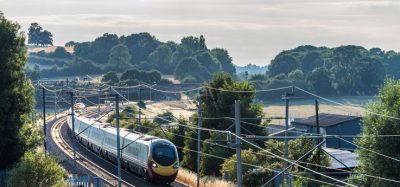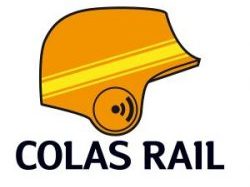RIA on HS2: We need more rail capacity, not less.
Posted: 28 September 2023 | Emily Budgen | No comments yet
Responding to reports that the second phase of the HS2 scheme between Birmingham and Manchester may be abandoned, reviews by the Railway Industry Association (RIA) on the Department for Transport (DfT) data demonstrates that passenger numbers today are higher than in 2012, when HS2 was first approved. Numbers are returning to pre-pandemic levels. The UK […]


Responding to reports that the second phase of the HS2 scheme between Birmingham and Manchester may be abandoned, reviews by the Railway Industry Association (RIA) on the Department for Transport (DfT) data demonstrates that passenger numbers today are higher than in 2012, when HS2 was first approved. Numbers are returning to pre-pandemic levels.
The UK Government first confirmed support for HS2 in 2012, where passenger numbers were the same as the overall rail passenger number from April 2022 to March 2023. Rail ridership since, however, has been around 15% higher than in 2012, when HS2 was approved, when the proposed original business case focused on the need for extra capacity for an expanding railway.
These passenger numbers have continued to rise, exiting the pandemic. The DfT figures, which also include the new ridership on the Elizabeth line (not running in 2012), show that over the last year, the average daily passenger level has risen from 83% in calendar year 2022 Quarter 4, to 91% in 2023 Quarter 1, to 96% in 2023 Quarter 2 and 3, when compared with 2019-20, which until Covid was the highest ridership on record. In April 2023, passenger levels reached over 100% on 14 out of the month’s 30 days.
“One of the reasons cited by critical politicians for scrapping HS2 Phase 2 is that passenger numbers are significantly down, and people will not travel by train in future,” Darren Caplan, Chief Executive of the Railway Industry Association, said.
“This is plain wrong, and all of us associated within the railway industry should be out there publicly refuting this assertion,” he added.
“In short, passengers have been returning in droves around the country and there is no evidence this trend upwards will not continue in future,” Caplan summarised.
The RIA explained that due to a growing population, and a generally agreed need to level-up and decarbonise, the government should not abandon the second phase of the HS2 construction. The main benefit of the scheme is that it would free up capacity on the West Coast, Midlands and East Coast Mainlines, for the increasing number of passengers.
More Like This
HS2 trains recognised for reduced carbon impact
HS2 welcome planning approval for Aston Church Road Overbridge in Birmingham
Images: HS2 begin work on longest green tunnel
OUT NOW: The Definitive Guide to Rail’s Digital Future
The rail industry is undergoing a digital revolution, and you need to be ready. We have released our latest market report, “Track Insight: Digitalisation.”
This is not just another report; it’s your comprehensive guide to understanding and leveraging the profound technological shifts reshaping our industry. We move beyond the buzzwords to show you the tangible realities of AI, IoT, and advanced data analytics in rail.
Discover how to:
- Optimise operations and maintenance with real-time insights.
- Enhance passenger services through seamless, high-speed connectivity.
- Leverage technologies like LEO satellites to improve safety and efficiency.
Featuring expert analysis from leaders at Nomad Digital, Lucchini RS, Bentley Systems and more, this is a must-read for any rail professional.
Related topics
High Speed Two (HS2), High-Speed Rail, Infrastructure Developments, Sustainability/Decarbonisation
Related organisations
Department for Transport (DfT), HS2, Railway Industry Association (RIA)







